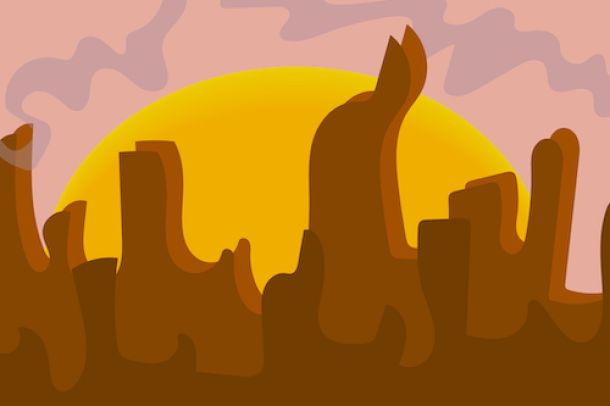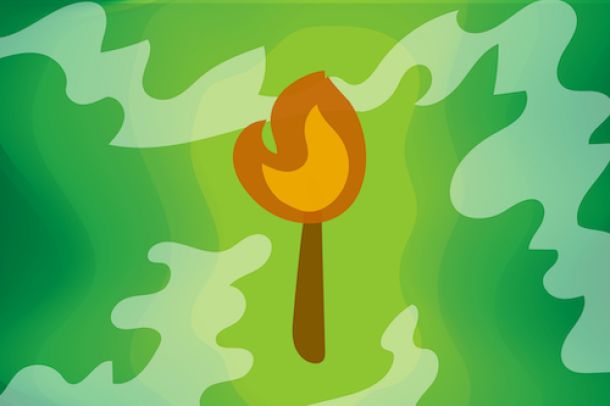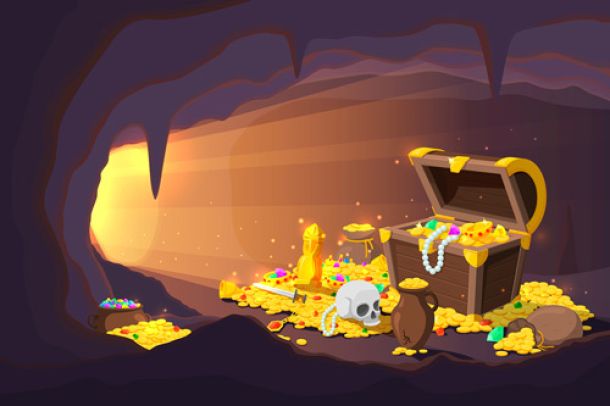Madhuvan
Lyrics
always almost there…
that ledge is the only thing i ever see
born in the heat to keep it always out of my reach
grab on a hold each treasure while you go
before they turn to sand, this man is all alone
haze
what a storm, what a maze
which one
which one which one's the way
lust
lost his trust
now roams the barren dunes
bones continue to rust
up and down, up and down
up and down, up and down
we go
always almost there…
that ledge is the only thing i ever see
worn so hollow from that shadow over me
boundless above my ancient holds it close
over, still closer than i’ve ever known
well if i had it all, if i had it all
what life would leave me satisfied?
all of this gold, all of this gold
it don’t weigh enough to make this life
whole
shelter
something felt
sure
molten beads of his lotus feet
dangle by his belt
pure, pure, pure
bhagavatam
dhruva, madhuvan
deep into the forest
he will go
no more demon roars
that ledge is the only thing i ever see
born in the heat to keep it always out of my reach
grab on a hold each treasure while you go
before they turn to sand, this man is all alone
if i had it all, if i had it all
what life would leave me satisfied?
all of this gold, all of this gold
don’t weigh enough to make this life whole
Song Bio
Track 3 on "Shenanigans Nite Club."
Sing Along
Song Interpretation
My ear for improvisational music is a direct result of my parents’ passion for Karnatic music, the south Indian devotional music, where virtuosos develop ragas and then elaborate on musical themes, engaging in playful “conversations” with one another. Learning to listen to the highly technical improvisations was and is integral to my careful concentration and appreciation.
When I really listened to Goose for the first time, I found the spontaneity and creativity of the lead guitarist to be simply entrancing. It is, moreover, part of the Parampara (lineage) from Ravi Shankar to John Coltrane to the Grateful Dead, and to the amazing diversity of jam bands in the world today.[1]
But, when I came across the song “Madhuvan” (released June 4, 2021, on Shenanigans Nite Club), I was incredulous to the fact that it revealed a real and tangible Indian and Hindu influence. My incredulity was demolished when I read anarticle in The El Goose Times[2] and Dennis Sunder’s April 2021 interview with Rick Mitarotonda[3], which referenced and solidified these connections. After a bit more sleuthing, I found this press release from May 14, 2021[4]:
"Madhuvan" references the story of Dhruva and his quest for enlightenment, originally written in the Bhagavata Purana. The song is an exploratory journey, examining life's most beautiful offerings and most dangerous pitfalls.
"The underlying idea is questioning what you’re pursuing and that, ultimately, true fulfillment often comes from something other than outer acquisition," says guitarist/vocalist Rick Mitarotonda.
How exciting!
I was also pleasantly surprised that another wonderful song, “Indian River,” was relevant to Hinduism, and not to Native Americans but to the Bhagavad Gita!
I am sure that many Goose devotees also read the article in The El Goose Times or even read the 2021 interview, and so are now familiar with these Hindu associations. In this brief article, I intend to provide curious Goose aficionados with a few more details about these two songs and their Hindu/ISKCON (International Society for Krishna Consciousness) foundations, so that they may derive, discover, and uncover more meaning from them. To this end, I will first offer an overview of the assumed religious context. Then, I will offer a reflection on Krishna, with specific reference, of course, to Madhuvan. Finally, in part two (in process), I will delve into details of the Bhagavad Gita and the passages quoted in “Indian River.” If my gentle readers’ appreciation of these songs and knowledge of Hinduism is enhanced, then I will have achieved my goal.
Broadly speaking, all the philosophical and religious schools extant in India, other than the Cārvaka (materialist skeptic) and Abrahamic ones, shared a belief in the mechanism of karma, that one’s actions in earlier lives affected both one’s rebirth as well as the events that are to occur in one’s future lives. The entity that was reborn is the ātman, which is born again and again. One accumulates some combination of puṇya (meritorious karma) or pāpa (demeritorious karma), popularly rendered in the “West” as “good” and “bad” karma. The accumulated karma manifests itself until it is depleted or until more is accrued. Karma is thus linked with a belief that one is reborn after one dies and that the type of body that one inhabits (and has inhabited in the past) is indexed to puṇya and pāpa. This cycle of birth and rebirth, in which everyone is bound, is called saṃsāra (worldly existence).[5]
Though the schools and traditions of Hinduism differ widely on the origins and precise function of these mechanisms of karma and saṃsāra, they all agree that they exist. They also all share an interest in ending this seemingly endless cycle, and this desire is their raison d’être. The state that sentient beings enter after being liberated is called mokṣa among the Hindu traditions. In Buddhism, this state is called nirvāṇa. The status and characteristics of mokṣa differ vastly between schools of thought and traditions of Hinduism. Some, but not all, Hindu traditions offer systematic methods by which adherents can break the cycle and attain the desired end. Life as a Hindu means having mokṣa as the telos or endpoint, whether one thinks about it constantly or begins to think about it only when confronting what appears to be one’s inevitable, if only temporary, death.
Each Hindu believes that it is possible to be liberated from the cycle of birth and rebirth. They differ, though, on the process by which one attains mokṣa and on the experience of mokṣa itself. This does not mean that a Hindu philosophy of life embraces a relativism, where every path leads to mokṣa or the experience of mokṣa is dependent on the beliefs of the individual. Rather, the history of Hinduism has involved debates and disagreements on how to attain mokṣa and what is precisely experienced thereafter. Some, for example, believe that mokṣa is obtainable by jñāna (knowledge) while for others it is made possible by bhakti (devotion) to a particular deva (God).[6] Rick Mitarotonda was influenced by the International Society for Krishna Consciousness (ISKCON) when he was living in Denver, having first come across them in Fort Collins in 2014.[7] According to a 2021 interview, Rick
…got involved, sang with them, ate the food, and had the discussions which were really enriching. And was like wow, you know, this is great, and I started going every week. And as time progressed, I started spending more time with them. Started going down to the temple in Denver and helping out here and there and going to the different events they were having and stuff like that and just got more involved with the whole program.[8]
ISKCON is preeminently a bhakti tradition with Kṛṣṇa, not surprisingly, as its focus.
The god that is central to both “Madhuvan” and “Indian River” is Kṛṣṇa. Who is Kṛṣṇa? Where can stories about him be found?
Kṛṣṇa is believed by Hindus to be one of 10 avatāras (incarnations) of the god Viṣṇu. There are ten avatāras that are traditional: Matsya (the Fish); Kūrma (the tortoise); Varāha (the boar); Narasiṃha (the man-lion); Vāmana (the dwarf);Paraśurāma (Rāma with the axe); Rāma; Kṛṣṇa; Buddha; and, finally, Kalki. There are a number of texts, most prominently the Purāṇas (Stories of the Ancient Past), part of the Hindu canon where stories about Kṛṣṇa are to be found. The Bhāgavata Purāṇa, or the Bhāgavata, as it is known to its readers, is devoted largely to Kṛṣṇa. Kṛṣṇa, who appears as an adult in the Mahābhārata (the Bhagavad Gītā is found in this larger text), is depicted in the Bhāgavata amidst līlā(play), as a baby, as a child, and as an amorous young adult cavorting with gopis (cowgirls). The stories are intended to inspire bhakti for listeners. The story of Dhruva, mentioned by Rick in the press release and in his interview as the impetus for the song “Madhuvan,” is found in the Bhāgavata. The Bhāgavata is central to several traditions of Hinduism, including, as mentioned, the International Society for Krishna Consciousness, which has its roots in the Bengali tradition of Caitanya, and which seemed to have had a significant impact on Rick!
Madhuvan
Sanskrit words often have many different meanings, depending upon the context in which the word is used, the text in which it is found, and even the time period it was used in. The Sanskrit word “madhu” overlaps with several different words in English, including “sweet,” “delightful,” and “honey,” and when combined with the suffix “-van” it can be an epithet for the god Viṣṇu. When connected with Kṛṣṇa, however, the term has a very specific meaning and refers to aforest on the western bank of the Yamunā river, believed to be in the home of Vṛndāvana, the region where Kṛṣṇa is believed to have grown up. It is also the location where Dhruva has his enlightening, heroic, and epic journey.
The story of Dhruva is the story of a journey of discovery and enlightenment, which is a variant of the “hero’s journey,” theorized about by J. Campbell in his The Hero with a Thousand Faces[9] and elsewhere and found in so many different religions, cultures, and worlds. The story is superbly (and accurately) translated by Edwin Bryant in his Bhakti Yoga: Tales and Teaching from the Bhāgavata Purāṇa (pp. 292-311), so I will not offer a detailed account here.[10] In brief, the story concerns Dhruva, who has been rejected by his father because of his birth, and consequently goes on a journey, initially to challenge God about his pedigree, in which he encounters many trials and tribulations, triumphs and tragedies. In the process, Dhruva’s journey morphs into a journey to understanding God, in this case Viṣṇu/Kṛṣṇa, and his relationship to God. His determination is magnificent, and he transforms into an archetypal bhakta (devotee) and eventually attains mokṣa. He is thus graced with a divine vision, both internal and external, of Viṣṇu, and is lauded for his determination and his devotion.
Here is how Rick himself understands the plot of the story as related to him by an ISKCON devotee named Govinda:
The way I understand it, so there was a king… Dhruva was the son of a king who had two wives. He might have been a straight up bastard son, I’m not really sure. But basically, the king had a wife who was kind of the queen, and maybe had a second wife… or maybe Dhruva’s mom was a like a servant or something. So Dhruva’s mom was lesser than. And the king’s actual queen, actual wife did not like Dhruva at all. She was really mean to Dhruva and was very not accepting and would say things like “You’ll never have the throne, like my son will inherit the throne and you’re nothing”. The father the king was kind of cool to both of them, but the mother was like ruthless apparently. So a few things happened and eventually he got older and kind of realized that this whole situation is messed up and he set out… he left the whole scene there, went into the Madhuvan forest, and started performing really, really intense… uh what’s the term you use?[11]
When he was in Colorado, Rick was on a self-described spiritual journey, not unlike Dhruva.
He explains:
the spiritual awakening for me personally started when I experienced some loss in my life, and started experiencing grief, and wondering where people that were so integral in my life, such an important part of my life, that were no longer here anymore, [12]you know… I was always when I was younger- even before all that happened- interested in the unknown, interested in mystery and occult ideas and things like that. But you never really- it’s hard to really need to dig, to need to seek when you’re comfortable. Life has a way of driving you certain places. You’re not going to- for me at least, I wasn’t really going to start asking questions in a very poignant way until I needed to. At that point after a bunch of people that I looked up to were no longer here, I needed to know more about what’s actually going on here, you know. That’s really where the real spiritual quest, if you will, began.
And, furthermore,
But I remember Govinda ended up telling me that story of Dhruva, and it was sort of, you know a personal connection to the story. He told me the story and it really stuck with me. And it morphed into a metaphor for that song that I was working on.
In this way, “Madhuvan” relates the journey that Dhruva, Rick, and anyone else might take; that is, transformative and requiring steadfastness, perseverance, and perhaps even courage.
This metaphor for the hero on a spiritual journey is echoed in so many Goose songs, including “Seekers on the Ridge” (I and II), “Western Sun,” and perhaps even “Elmeg the Wise.” And, the metaphor for tenacity and optimism is found, of course, in “Tumble.”
“Madhuvan” lyrics
With these details in mind, the lyrics and meaning may become more transparent to the discerning and enlightened reader.[13] While these are some suggestions, they are not to be taken as definitive. After all, there is always the author’s intended meaning and the meaning understood and experienced by the listener. That said…
The beginning of “Madhuvan” references challenges and determination:
always almost there…
that ledge is the only thing I ever see
born in the heat to keep it always out of my reach
grab on a hold each treasure while you go
before they turn to sand this man is all alone
Here is how Rick explained it in his 2021 interview with Dennis Sunder:
So it’s sort of like… and “always almost there” kind of ties into that as well. The idea is like, I know a lot of people and see it in myself- there’s always- you’re always striving for something. There’s always like, alright I just need to get through this month and then I’ll be good. Or I just need to get this thing, like I need to get a new house, I need to get a new couch, if I get that new couch then I’ll be good. If I get the new guitar then I’ll be good. If I get a girlfriend then I’ll be good. It’s kind of like this constant spiral of thinking that you need something outside of yourself. And the ledge is sort of the metaphor for that for me. Sort of like this thing that I want to get to that is above myself, and it just takes up my vision. It’s the only thing I see. It’s all I care about. I think you know, recognizing that that’s the case, and that’s, you know, where you are. And having self-awareness that all you care about is this one goal, with the full simultaneous awareness that once you achieve that goal, are you going to really be… if I ever get up there, am I really going to be fine then? Or am I just going to be lost and then try to figure out what the next ledge is, you know?[14]
And, moreover:
… in the verse I pictured like a guy walking through the desert- it’s almost like there’s three narratives going on at once in that song, in my mind. I mean, at the end of the day it’s a song and people can derive whatever meaning, you know. At a certain point like, what makes what I think about it more valid than anyone else? But yeah, the verses are sort of, there’s like there’s some person who’s walking through these dunes, this desert. And he’s kind of lost or whatever, and he kind of finds this truth somewhere. Up and down up and down… you find that your bones turn to rust and stuff like that, you find that you’re burning yourself out trying to get whatever your ledge is, you know. Everyone’s chasing their ledges whatever they are, and you burn yourself doing that. But I guess this guy in the desert figured it out at some point and had beads, the chanting beads, and chose that path to realizing that none of the ledges, none of the external things to himself are what’s gonna make him good. It’s in himself. He chose the chanting path to get there.[15]
And the choices and transformations in the journey itself:
haze
what a storm what a maze
which one
which one, which one's the way
lust
lost his trust
now roams the barren dunes
bones continue to rust
It is plausible that the cycle of karma-saṃsāra (birth and rebirth) is references here:
up and down, up and down
up and down, up and down
up and down, up and down
up and down, up and down
we go
always almost there
And perhaps here the proximity of Viṣṇu, who has never been far away and is always close for the devoted:
that ledge is the only thing I ever see
worn so hollow from that shadow over me
boundless above, my ancient holds it close
‘over, still closer than I’ve ever known
As mentioned, Dhruva is at first seeking to right the wrong of his pedigree, an entirely materialist endeavor, but then this is replaced by a spiritual and non-materialistic goal:
well if I had it all, if I had it all
What life would leave me satisfied?
all of this gold, all of this gold
it don't weigh enough to make this life
whole
And then his realization and divine vision of Viṣṇu (whose feet are characterized at times as lotuses):
shelter
something felt
sure
molten beads of his lotus feet
dangle by his belt
pure, pure, pure
The beads, as Rick himself explained, is in reference to malas (prayer beads), most likely made from the wood of the tulasi plant (Ocimum tenuiflorum). The Tulasi mala, with 108 beads, is especially sacred for devotees of Kṛṣṇa/Viṣṇu. The use of the word “shelter” here is significant since Kṛṣṇa is held to protect and shield his devotees, is someone with whom one can find refuge. There is a well-known story in which Kṛṣṇa holds Mount Govardhana over his head and shelters his entire village from a storm unleashed by the god Indra.[16]
What then follows is an undeniable reference to the story as found in the Bhāgavata Purāṇa:
Bhagavatam
dhruva, madhuvan
Deep into the forest
he will go
No more demon roars
I suspect that the characterization of the forest as having “no more demons roars” is in reference to another myth, which details the destruction of the Asura (a class of being) named Madhu by Viṣṇu, who lived in the Madhuvan forest.[17]
The song concludes with another reflection about the spiritual life as preferable over the materialist one:
if I had it all, if I had it all
what life would leave me satisfied?
all of this gold, all of this gold
don't weigh enough to make this life whole
Recall, the 2021 press release:
"Madhuvan" references the story of Dhruva and his quest for enlightenment, originally written in the Bhagavata Purana. The song is an exploratory journey, examining life's most beautiful offerings and most dangerous pitfalls.
"The underlying idea is questioning what you’re pursuing and that, ultimately, true fulfillment often comes from something other than outer acquisition," says guitarist/vocalist Rick Mitarotonda.
“Madhuvan” is a very beautiful song indeed. Surely, others have had an epiphany when listening to it. Dhruva, having attained the divine vision is characterized in Bhāgavata Purāṇa 4.12.18:
“Carried away by his bhakti to Bhagavān, Hari, he was continually overwhelmed with tear drops of ecstasy (ānanda) flowing ceaselessly. His body was covered with hairs that stood on end due to bliss, and his heart melted. Freed from the subtle body, he lost awareness of his body.”[18]
Part Two in process…
direct link to this writeup on Deepak's blog site: http://deepak-sarma.squarespace.com/new-blog/2022/6/22/goose-and-vaiavism-madhuvan-and-indian-river?fbclid=IwAR0Gex-jg81oFAuJtVofWhMWasqpw3HaVV0w0jJdgXP2llYBIkyewdDzEgQ
More Song Interpretations
All Goose Song Lyrics *
My GC
-
This email address is being protected from spambots. You need JavaScript enabled to view it.
GooseCommunity is a project of Western Sun Foundation, a non-profit organization.
Website crafted by Daniel Baron | Joomla Design Studios








